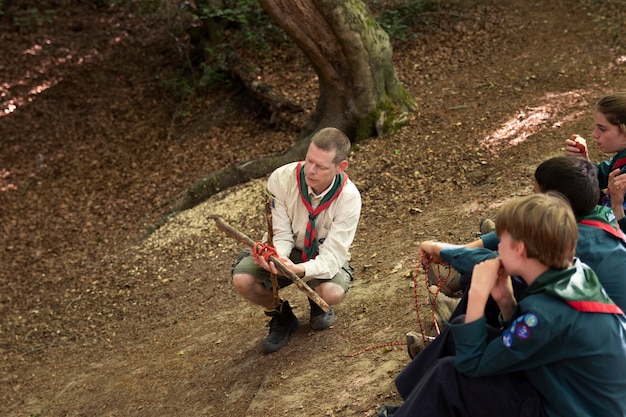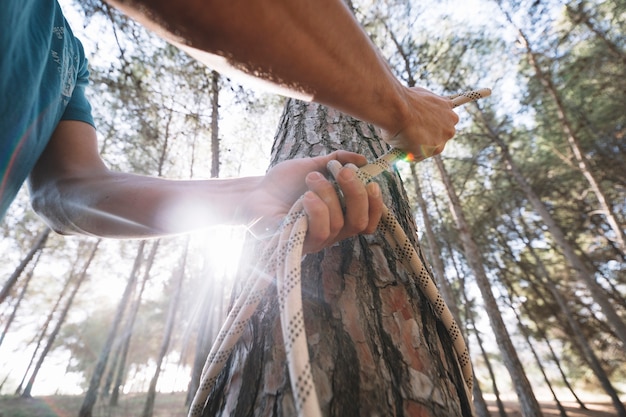When food is scarce and stores are out of reach, trapping can be a reliable way to secure protein in the wild. But trapping is not just about mechanics — it’s about ethics, legality, animal welfare, and safety. This guide explains what trapping is, the types of simple approaches that are appropriate for survival, how to think about trap choice, and safer alternatives you can use immediately.
1. The mindset: survival, legality & ethics first
Before you even think about traps, lock this in:
- Only trap where it’s legal. Local hunting and wildlife rules vary widely. In many places trapping without permits is illegal.
- Respect humane treatment. Aim to minimize suffering. Live-capture and quick, humane dispatch (where legally allowed) are the only responsible approaches.
- Use trapping as part of a broader survival plan. Traps take time to work — combine them with foraging, fishing, and other food strategies.
- Safety: Traps can injure people (including family members, other foragers, or responders). Mark trap lines and keep them away from trails.
If you’re unsure, don’t set traps. Contact local wildlife or take certified training first.
2. Types of simple trapping approaches (high-level overview)
Here are broad categories of survival trapping methods — explained conceptually so you understand options without blueprints:
A. Live-capture (humane) traps
- Purpose: Catch small animals alive for later dispatch or release.
- Typical use: Rabbits, squirrels, small mammals.
- Why consider it: Less likely to cause unnecessary suffering when monitored; you can release non-target species.
- Examples (conceptual): Box or cage traps that allow an animal to enter and become confined until you arrive.
B. Passive funneling / enclosure methods
- Purpose: Lead animals into a confined area (natural or improvised) where they can be harvested.
- Typical use: Fish weirs, stone funnel traps, or brush corrals used historically for small game and birds.
- Why consider it: Works without moving parts; low maintenance and lower risk to people.
C. Baited snares (caution advised)
- Purpose: Capture animals by restricting movement with a loop.
- Typical use: Small mammals.
- Notes: Snares can be lethal and can cause suffering if not checked frequently. If used, they must be legal, set for the correct species/size, and checked often — otherwise avoid.
D. Traps that catch but don’t maim (preferred in survival)
- Purpose: Secure animals without injuring them — e.g., gravity-based drop traps or simple cage traps.
- Benefit: Safer for non-target species and for people who may encounter the device.

3. Principles that make any trap effective (and safer)
Rather than a build guide, learn these survival principles — they apply to any lawful, ethical trap:
- Location is everything. Place near signs: tracks, droppings, runways, burrow entrances, or watering points.
- Concealment & camouflage. Natural cover and scent masking help make your trap believable to animals.
- Appropriate bait & scenting. Use local foods or smells animals are familiar with — raw nuts, roots, or locally found bait. Don’t overbait; one or two attractive items are enough.
- Low profile & non-threatening approach paths. Animals avoid odd objects. Make your trap look like part of the landscape.
- Frequent checking. Check traps at first light and before dark. This reduces suffering, prevents bait theft, and reduces non-target captures.
- Non-target & safety planning. Expect non-target animals (and people). Use designs that reduce accidental capture, and clearly mark trap locations for team members.
4. Materials & simple gear (what’s useful, conceptually)
In survival you’ll use what you have. Useful items include:
- Sturdy cordage (paracord, vines) — for holds or doors (not for lethal snares unless legally trained).
- Slabs of wood, branches, and rocks — for frames, funnels, or trap doors.
- Metal mesh or scavenged cages (if available) — for live traps.
- Bait materials — local nuts, roots, grains, or fish scraps.
- A digging tool or sharp stick — for setting pit features or anchors.
Always prefer reusable, easily repaired materials and avoid creating hazards that will persist after you leave.
5. Humane handling & dispatch (high-level guidance)
If you legally harvest an animal:
- Minimize suffering. Learn humane dispatch methods taught by accredited instructors and local hunting programs.
- Respect local ethics and regs. Some species require specific handling or reporting.
- Use all edible parts. In survival, waste is unacceptable — use meat, organs, fat, and hide where safe/legal.
Never attempt to trap protected species. When in doubt, leave it alone.
6. Safer alternatives to make survival trapping less risky
If you’re not trained in trapping, these alternatives are practical, low-risk ways to get food:
- Fishing: Lines, simple hooks, or even hand-gathering shellfish are often faster and lower-risk.
- Foraging: Seasonal edible plants, nuts, mushrooms (only if you’re certain), and insects (nutritious and widely available).
- Bird and rodent traps with guidance: Buy a small live-capture cage trap and learn how to use it safely from a local course.
- Cooking & preserving: Learn to smoke/dry meat to make a small catch last longer.

7. Training, resources & where to learn responsibly
Don’t improvise life-or-death techniques without training:
- Take accredited hunting/trapping courses or Wilderness Survival classes. Many local wildlife agencies offer beginner programs.
- Books & reputable resources: Look for regional field guides, survival manuals, and humane trapping texts.
- Mentorship: Learn from an experienced hunter or trapper who follows local laws and ethical practices.
8. Safety checklist (quick)
- ✅ Know local laws & seasons — avoid protected species.
- ✅ Use non-lethal/live traps where possible.
- ✅ Mark trap locations clearly for your group.
- ✅ Check traps at least once daily.
- ✅ Keep traps away from trails and campsites.
- ✅ Learn humane dispatch only from qualified sources.
- ✅ Record any catch (some regions require reporting).
Final thoughts
Trapping can be a useful survival skill, but it carries real ethical, legal, and safety responsibilities. If you plan to include trapping in your survival skillset, prioritize legal knowledge, humane practices, and proper training. In many short-term survival situations, low-risk alternatives like fishing and targeted foraging will produce faster, safer results.

















